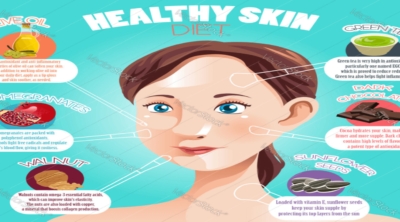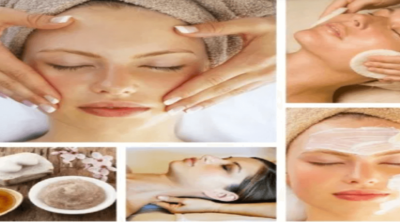
Astaxanthin, a naturally occurring carotenoid has gained significant attention for its immense ability to help achieve younger-looking skin. This informative article is written with the aim to share its numerous benefits with the readers.
Astaxanthin is called the “King of Carotenoids” because it is more powerful than most other carotenoids in the family, and is known for its numerous health benefits. Lately, it has come into the limelight because of its positive effects on skin. It is being widely used in skin care products due to its several skin benefits. This carotenoid is difficult to obtain as there are only a few existing sources. Naturally, it is produced by a microalgae known as Haematococcus pluvialis. Krill oil, shellfish, salmon, and rainbow trout are some of the limited natural sources of astaxanthin. Besides these, vegetables like red peppers, carrots, and some fruits also contain this compound. Including these in your regular diet can provide the required amount of this carotenoid to keep the skin beautiful and healthy.
What are the Various Skin Benefits of Astaxanthin?
Astaxanthin can be included in the diet or consumed as a supplement to enjoy its several skin benefits. All these produce a cumulative effect to impart a glowing look to the skin that is free from the ill-effects of aging. Given below are the various benefits of astaxanthin.
- It improves quality of the skin.
- Reduces skin dryness.
- Prevents sunburn by minimizing the damaging effects of UV rays.
- Decreases the skin’s susceptibility to the scorching sun, thereby making long stays in the sun a lot more tolerable.
- Helps in reversing signs of aging like fine lines, wrinkles, dark spots etc.
- Brings significant improvement in skin problems like pimples and acne.
- Gives the skin a smooth feel by increasing skin elasticity and tone.
How Does Astaxanthin Work?
Moving out in the sun is something that cannot be avoided. Sunlight is one of the prime factors that affects the skin and progresses it towards damage. Besides sunlight, other environmental factors like pollution and ozone also contribute towards deteriorating the quality of the skin. UVA and UVB rays emitted by the sun are strong enough to penetrate the deep layers of the skin, triggering the formation of ROS or Reactive Oxygen Species that are known to have a negative impact on the skin. When ROS is produced in excessive quantities, the extent of damage is further increased leading to the appearance of aging signs like dark spots, dark circles under the eye, dry skin, fine lines, etc.
Astaxanthin present in the body is known as internal sunscreen as it acts against these negative effects. Nowadays, many skin care products containing it are available which can be used to maintain a healthy, younger-looking skin. When such products are applied topically, astaxanthin begins its mechanism of action. ROS produced in the topmost layer of the skin reduces its capability to act as a natural barrier leading to loss of moisture from the skin. As a result, the skin becomes dull and dry. Astaxanthin scavenges these unwanted elements from the skin and revives its smoothness.
A sunburn is basically an inflammation of the skin as a result of the damaging effects of UV rays that penetrate deep into the tissues. This condition is relieved by astaxanthin due to its anti-inflammatory properties. It is said that the inflammation is minimized by the NF – kB kinase dependent pathway. Reactive Oxygen Species cause loss of skin tone and wrinkle formation by breaking the collagen matrix of the skin and producing high levels of matrix metalloproteinases. Astaxanthin decreases these effects to maintain a wrinkle-free skin.
Do Studies Support the Use of Astaxanthin?
An independent study was conducted to measure the time required to produce skin redness after it is subjected to UVA and UVB light. Subjects were asked to take 4 mg of astaxanthin as a supplement everyday. Results after 3 weeks of a daily supplemental dose of the carotenoid revealed a significant increase in the delay for the appearance of any form of redness. Another study was conducted in Japan in the year 2002 with middle-aged women (around 40 years). They were asked to consume a dose of 2 mg astaxanthin per day for a period of four weeks. Within 2 weeks, skin improvement was observed. After the completion of 4 weeks, the skin looked even better. These studies clearly infer that astaxanthin is beneficial for the skin and can be used for its improvement.
The powerful nature of astaxanthin makes it stand out from other carotenoids in the group. It is 65 times better than vitamin C, 54 times better than beta-carotene, and 14 times better than vitamin E in scavenging free radicals of the body. It is capable of crossing the blood-brain barrier and the blood-retinal barrier, and can incorporate in the cell membranes owing to its solubility in lipids. These properties of astaxanthin render it as a wonderful supplement for silky and smooth, wrinkle-free skin.


